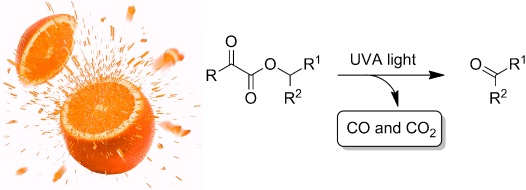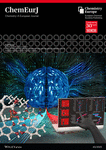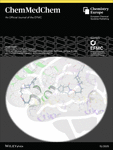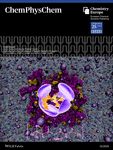Journal list menu
Press Release
Angewandte Chemie International Edition ,
doi: 10.1002/anie.201410778
Nr. 01/2015
January 27, 2015
A Burst of Aroma
Light-induced generation of gas breaks open microcapsules and releases fragrances
Contact: Andreas Herrmann, Firmenich SA (Switzerland)
Registered journalists may download the original article here:
Controlled Release of Encapsulated Bioactive Volatiles by Expansion of the Capsule Wall through the Light-Induced Generation of a Gas
Fragrances that are sensitive or need to be released with a time delay can be enclosed in microcapsules. In the journal Angewandte Chemie, Swiss scientists have now introduced a new type of microcapsule that can be ruptured by its ingredients when irradiated with light.

© Wiley-VCH
There are many types of microcapsules, such as those used in detergents or other consumer products. If a fragrance is meant to be released from a detergent during the wash cycle, the capsules are designed to dissolve in the washing machine. Other types of microcapsules survive the wash cycle, but break open when they are mechanically rubbed as the garment is worn. The fragrance is released little by little and the garment smells fresh for a longer time.
A team led by Damien L. Berthier and Andreas Herrmann (Firmenich SA, Geneva, Switzerland) has now developed a new variety of capsule that releases its aromatic contents when exposed to light. These capsules contain a class of substance that decomposes when exposed to light. The decomposition releases gases, increasing the pressure within the capsule and causing it to burst.
In their studies, the researchers used 10–25 µm capsules that are made of polyurea and contain 2-oxoacetates. These are compounds that decompose under UV light. In the absence of oxygen the decomposition releases a molecule of CO, in the presence of oxygen, it releases a molecule of CO2. This causes the pressure within the capsules to increase, making them burst. The capsules can be filled with both an unscented oxoacetate compound and one or more fragrances. Alternatively, the oxoactetate group can be coupled directly to a fragrance. The release of the encapsulated compounds can be released when the capsules are brought to a surface where they are exposed to daylight, or by mechanical rubbing of the capsule walls.
This simple, inexpensive, and very efficient new concept is especially well suited for the encapsulation and controlled release of volatile compounds like fragrances. In the future, this technology could also be used for the release of other classes of substance, such as agrochemicals.
(2210 characters)
About the Author
Dr. Andreas Herrmann studied Chemistry in Karlsruhe, Strasbourg, and Zurich. He has been working as a research chemist at Firmenich SA, a leading producer of perfume and aroma substances, since 1997. His research is focused on the development of systems for the controlled release of fragrances under mild environmental conditions.






































